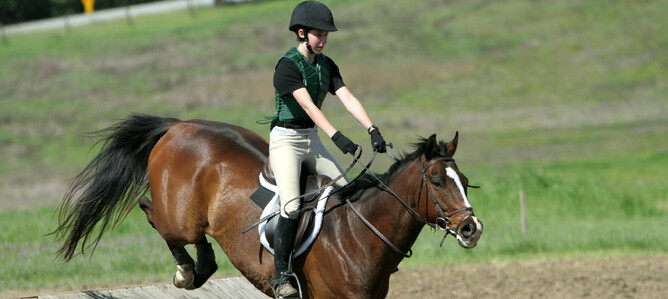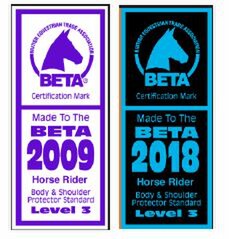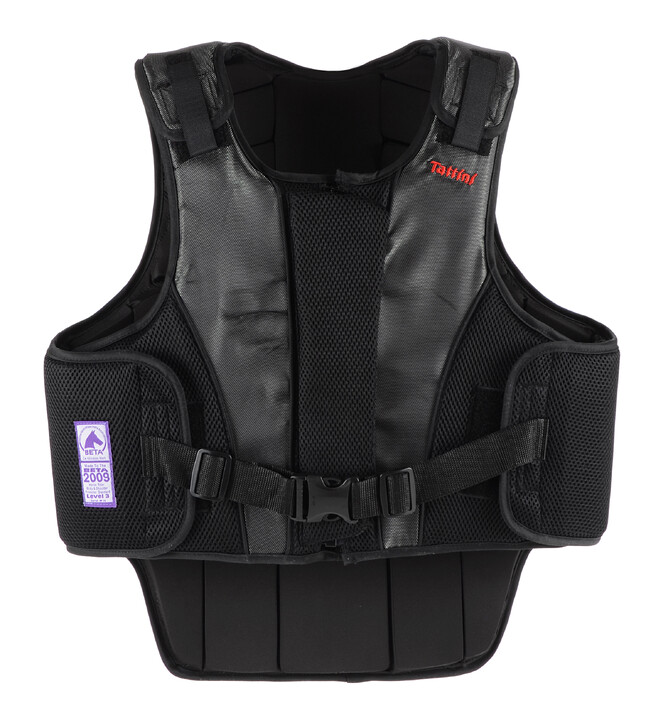In Part 1 we covered an introduction to the new safety requirements for helmets that are rolling out throughout the UK, EU and here in New Zealand.
Another very important safety item for the equestrian rider is the body protector or vest. Unfortunately, there’s not as much focus on vests as there are on helmets which is a shame as they are equally just as important.
What is a body protector?
First things first - A body protector is a padded vest designed to protect your torso (the area between your neck and hips). Your torso is rather an important part of your body as it includes many major organs such as your lungs. Injuries to this area can be serious!
A body protector will help to reduce injuries if you fall off a horse or get trodden on after falling off. Ideally, you should wear a body protector whenever you go riding but particularly if you are jumping, doing cross country or riding on unfamiliar terrain or even an unfamiliar horse.
Although there are no guarantees one will protect you from all injuries on horseback, a body protector will certainly protect you far more than wearing no protection on your torso at all. They give vital protection to internal organs and bones, and will reduce swelling and bruising significantly if you are in a fall. Although they cannot protect the spine itself, they can cushion any fall and therefore reduce the potential impact on your back.
What standards should you be looking for?
Like helmets, body protectors also follow some common safety standards. The British Equestrian Trade Association otherwise known as BETA, administer the internationally recognized BETA Standards. This standard was developed in consultation with riding organizations, medical consultants and technical advice from RAPRA (Rubber and Plastics Research Association). There are also equivalent US (ASTM) and European (EN 13158) standards for body protectors.
The BETA body protector has three levels of protection:
Level 1 [Black label] - Only considered appropriate for licensed jockeys.
Level 2 [Brown label] - Provides a lower than normal level of protection that is only considered appropriate for use in low level situations. These DO NOT include riding on the road or hard surfaces, riding over jumps, riding young or excitable horses, or riding while inexperienced.
Level 3 2009 [Purple label] - Considered appropriate for normal horse riding, competitions and for working with young and excitable horses.
Level 3 2013/2018 [Blue label] - Considered appropriate for normal horse riding, competitions and for working with young and excitable horses.
Body protectors should feature the BETA 2009 or 2000 Level 3 standard, as these provide riders with the best impact absorption and coverage, and supersede all previous BETA standards.
Although there is little difference in the safety aspects between the two – BETA 2009 is the result of a revision to the European and, therefore, BETA body protector standard – small changes have been made, such as the introduction of zip covers, a restriction on removable tailpieces and the re-positioning of shoulder fastenings.
You should look for the BETA standard on any garment you buy: this is recommended by many clubs, and often stipulated in the criteria of events and competitions. In the UK, all body protectors must conform to the British Safety Standard—check labels to ensure yours conforms.
Correct fitting
Many body protectors on the market can be altered to fit in several different ways. It is vital to think about how you will wear your body protector when you get it fitted and try to replicate that scenario. For example, if yours will be worn over a riding jacket, then have your jacket on underneath when your body protector is fitted. However, if it will be worn over a shirt or cross-country top, then it should be fitted to be worn in that way.
As a brief guide, here are some pointers as to how a body protector should fit. It should:
- Cover the entire circumference of your torso.
- The sides of the protector should reach to below your pelvis, and the back should extend to at least 15 cm beneath the top of your pelvis.
- The front base of body protector should reach to at least 2.5 cm under your last rib.
- The back of the body protector should extend to the base of your neck, covering your seventh vertebrae.
- The front top of the body protector should reach your sternum - in between your collarbones and underneath your chin.
- Overall, look for a comfortable and snug (but not tight) fit. Although your body protector will mold to your shape with time, any significant weight loss or gain will affect the fit and protection it offers.
Body protectors are made of foam and covered in a spongy fabric, making them easy to clean down after a hard ride. The foam is typically a PVC Nitrile (synthetic rubber) which is heat sensitive and therefore gradually molds to the shape of the wearer. The foam is usually perforated to increase airflow and flexibility, and to reduce the overall weight of the vest.
When should they be replaced?
Body protectors should be replaced at least every three to five years because absorption properties will start to decline after this period. This is important, because although a body protector can appear in good working order, it might have become brittle with age.
Always check your garment for dents immediately after a fall or kick. The foam should expand back into shape after 30 minutes. If this doesn’t happen, it is likely the garment has incurred damage and subsequently lost its absorption properties. It is important in this instance that the body protector be replaced. Hidden damage to a garment is a very good reason for avoiding second-hand purchases, no matter how tempting they might be.
This blog was originally posted 6 January 2017




